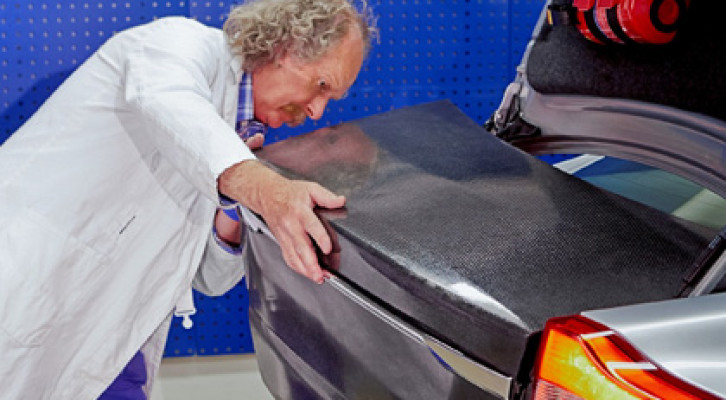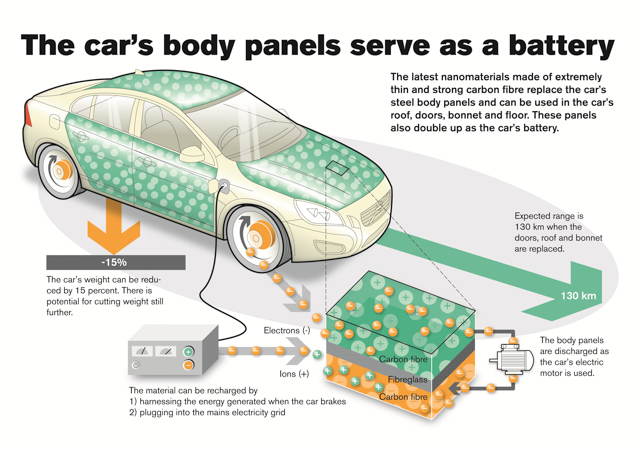One of the biggest limitations facing electric vehicles is battery size and storage. As part of a European Union-funded research project, Volvo may have come upon a significant breakthrough in energy-storage technology that could literally reshape the way electric cars are designed.
In experimenting with carbon fiber and polymer resins, Volvo created an advanced nanomaterial that basically consists of structural supercapacitors. In plain English, that’s a lightweight energy-storage system than takes up much less space inside the car. In fact, the carbon-fiber laminate sandwiches the battery element, and can be shaped to form automotive components, such as doors, trunklids and wheel arches–effectively turning the car’s very body into a battery.
Volvo also found that the material, dubbed “nanobatteries,” charges and stores more rapidly than conventional batteries. Both regenerative brakes and plug-in charging have been explored. Volvo is currently testing an S80 with a trunk lid and plenum cover made of this material. The new material is being used to replace the car’s standard battery, as well as the stop-start batteries and even some structural pieces. The lightweight carbon fiber-based nanobattery is stronger than conventional steel in some applications.
Volvo says that an electric car that substituted nanobatteries for its battery components could reduce overall weight by fifteen percent or more. An electric Volvo using nanobattery material in its doors, roof and hood would have an estimated range of 130km. As Volvo finds more places to add nanobatteries, that range could increase dramatically.
There are currently no plans to use nanobatteries in production vehicles, as tests are continuing, but the possibility of a very exciting (and electrified) future is looking bright.






